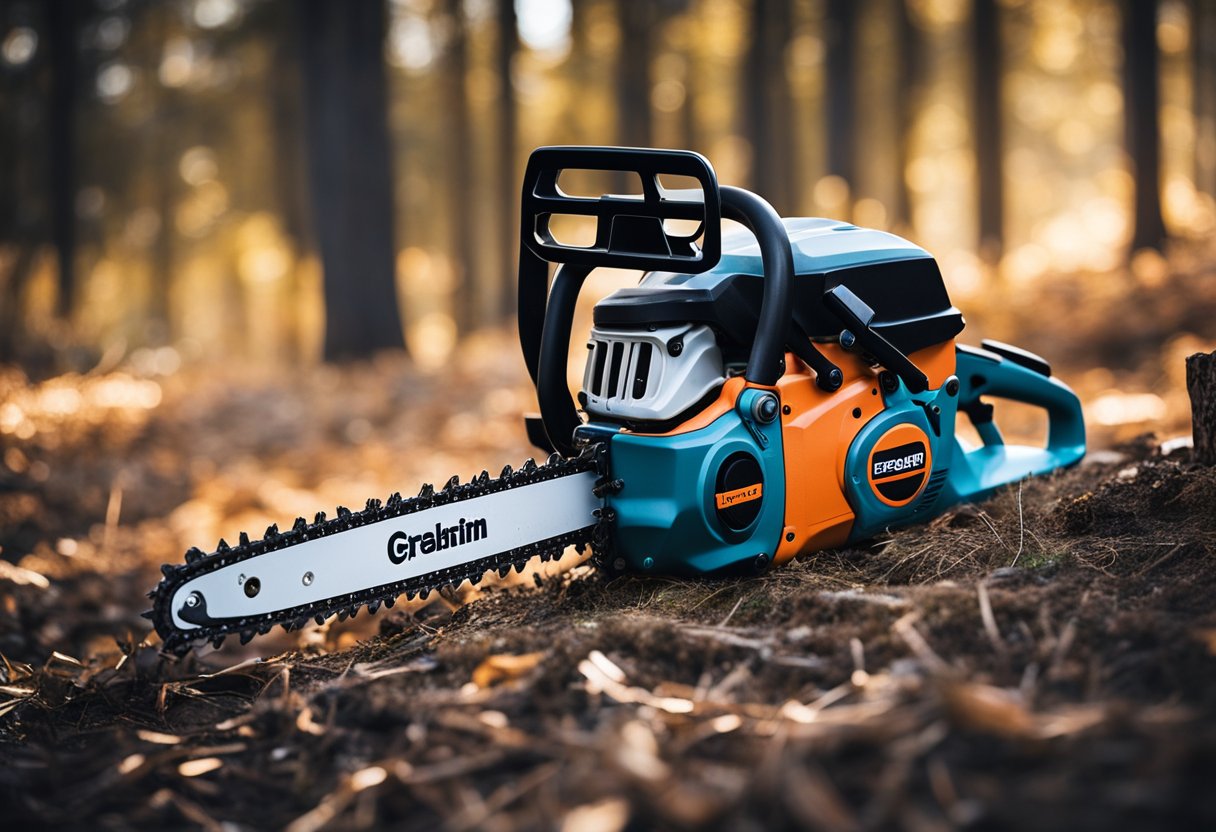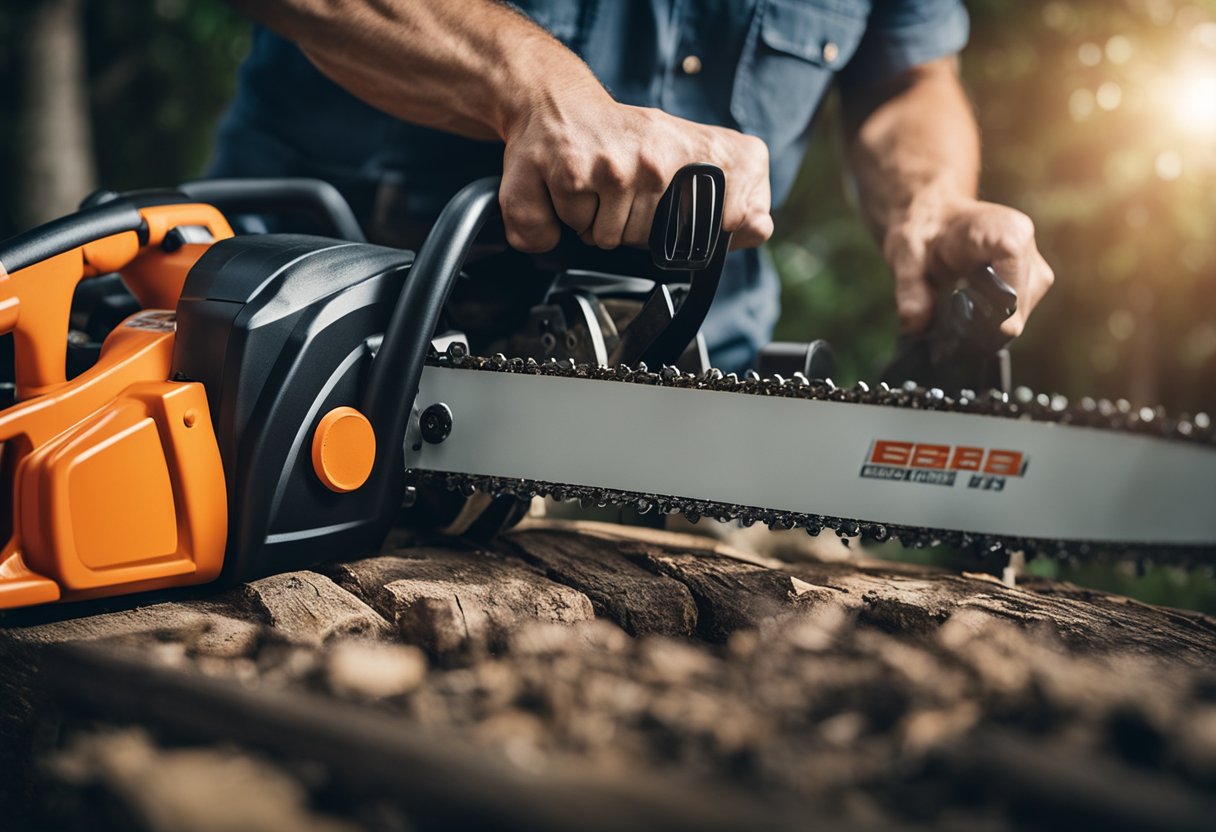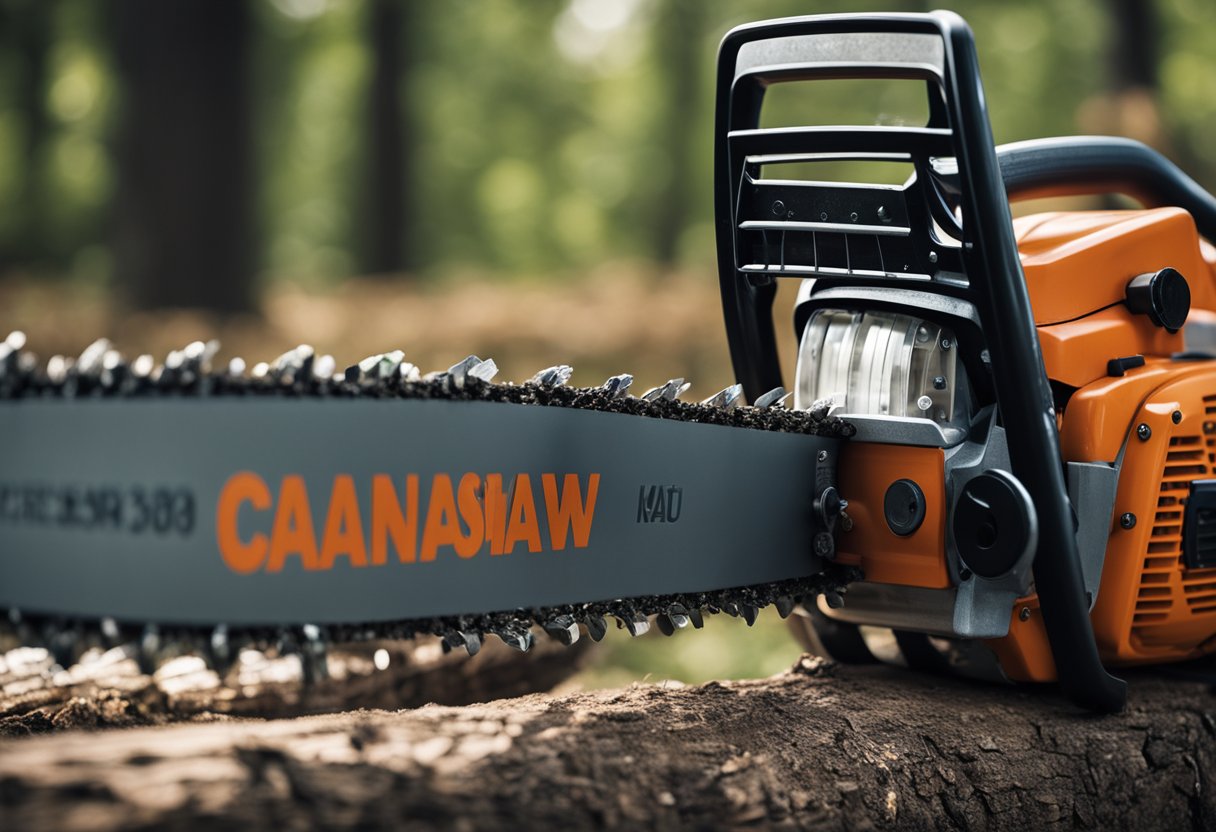When it comes to chainsaws, compression is a crucial aspect that can affect the performance of the tool. Compression is the measure of pressure created by the piston in the combustion chamber. It is the force that drives the engine’s power, and the higher the compression, the more power the chainsaw can generate. So, how much compression should a chainsaw have?
The answer is not straightforward since it depends on the type of engine and the chainsaw’s size. Generally, a 2-stroke chainsaw engine should have a compression level ranging from 100 to 160 PSI. The ideal range is between 100 to 110 PSI, and a reading below 70 PSI indicates a severe problem that requires professional attention. However, the compression level can vary depending on several factors, including the chainsaw’s age, maintenance, and use.
Key Takeaways
- Chainsaw compression is a crucial aspect that determines the engine’s power.
- A 2-stroke chainsaw engine should have a compression level ranging from 100 to 160 PSI, with the ideal range being between 100 to 110 PSI.
- The compression level can vary depending on the chainsaw’s age, maintenance, and use.
Understanding Chainsaw Compression
As a chainsaw enthusiast, I understand the importance of having a good compression reading for your chainsaw. Compression is the amount of pressure that builds up inside the engine’s cylinder when the piston moves up during the compression stroke. It is crucial for starting the chainsaw and keeping it running smoothly.
A two-stroke chainsaw engine, also known as a two-cycle engine, requires a specific compression range to operate correctly. Typically, the compression level for an average-sized chainsaw should be around 110 PSI, while a bigger chainsaw will usually have a compression reading closer to 160 PSI 12.
The compression level of a chainsaw can vary depending on several factors, such as the motor capacity, engine power, and the condition of the piston, cylinder, and rings. A lower motor capacity will have lower compression, while a higher power engine will have higher compression 2.
It is crucial to note that if the compression is too low, the chainsaw may not start, and if it is too high, it may cause damage to the engine 3. Therefore, it is essential to check the compression level of your chainsaw regularly to ensure it is within the recommended range.
In conclusion, understanding chainsaw compression is crucial for maintaining the performance and longevity of your chainsaw. By regularly checking the compression level and ensuring it is within the recommended range, you can ensure that your chainsaw runs smoothly and efficiently.
Key Components Influencing Compression
When it comes to chainsaw compression, there are several key components that play a significant role. These components include the engine and piston, fuel and carburetor, gasket and valves, and spark plug. Understanding how these components work together can help you determine the ideal compression range for your chainsaw.
Engine and Piston
The engine and piston are the heart of any chainsaw, and they play a crucial role in determining the compression level. The piston moves up and down inside the cylinder, compressing the fuel mixture and air before ignition. The motor capacity, piston, and piston rings are all factors that can influence the compression level.
Fuel and Carburetor
The fuel and carburetor are also essential components that influence chainsaw compression. The fuel mixture must be correct to ensure proper combustion and compression levels. A carburetor that is not functioning correctly can lead to a lean or rich fuel mixture, which can impact compression levels.
Gasket and Valves
The gasket and valves are responsible for sealing the combustion chamber and ensuring that the fuel mixture is compressed correctly. A faulty cylinder head gasket or valve can lead to a loss of compression, which can negatively impact the performance of your chainsaw.
Spark Plug
The spark plug is responsible for igniting the fuel mixture in the combustion chamber. A faulty spark plug can lead to incomplete combustion, which can impact compression levels and overall chainsaw performance. It is essential to check and replace your spark plug regularly to ensure optimal performance.
In conclusion, understanding the key components that influence chainsaw compression is crucial for maintaining optimal performance. By paying attention to the engine and piston, fuel and carburetor, gasket and valves, and spark plug, you can ensure that your chainsaw is operating at its best.
Testing Chainsaw Compression
https://www.youtube.com/watch?v=jQpf3gqGXtI&embed=true
As a chainsaw owner, it is crucial to test the compression of your chainsaw engine regularly. This test helps you to identify issues with your chainsaw engine before it becomes a significant problem. In this section, I will discuss how to test chainsaw compression, identify issues, and fix compression problems.
Compression Test
To test the compression of your chainsaw engine, you will need a compression tester or compression test gauge. The compression range for a chainsaw engine is between 100 and 160 psi, with an ideal compression level of 100 to 110 psi. To perform the test, follow these steps:
- Warm up the engine by running it for a few minutes.
- Remove the spark plug and insert the compression tester or gauge into the spark plug hole.
- Hold the throttle wide open and pull the starter cord several times.
- Check the reading on the compression tester or gauge.
If the reading is below 70 psi, it indicates a bigger problem, and you may need to consult with a professional.
Identifying Issues
Low compression can lead to a loss of power and other issues, such as air leaks. To diagnose the problem, you can perform a thumb test. Place your thumb over the spark plug hole and pull the starter cord. If you feel pressure on your thumb, it indicates that there is compression. If you do not feel any pressure, it means that there is a loss of compression.
Air leaks can be caused by a worn-out crankshaft seal or a clogged air filter. A loss of compression can also be caused by worn-out parts due to wear and tear.
Fixing Compression Problems
If you identify any compression problems, you can fix them by performing regular maintenance on your chainsaw engine. Ensure that you warm up the engine before use and replace the air filters regularly to prevent clogging. You can also fix air leaks by replacing the worn-out crankshaft seal.
In conclusion, testing chainsaw compression is a crucial part of chainsaw maintenance. By following the steps outlined above, you can diagnose and fix any compression problems before they become significant issues.
Impact of Compression on Chainsaw Performance
https://www.youtube.com/watch?v=OhuQhi1s6ng&embed=true
As someone who has worked with chainsaws for over two decades, I know that engine compression is a critical factor that can determine the performance of a chainsaw. The compression level of a chainsaw’s engine refers to the pressure created in the combustion chamber when the piston is at the bottom of its stroke.
A chainsaw with low compression can result in poor engine performance, reduced power, and a shorter lifespan of the machine. On the other hand, a chainsaw with high compression can lead to issues like knocking and pre-ignition that can cause severe damage to the engine.
The ideal engine compression for any chainsaw is between 120-160 psi. If the compression level is below 110 psi, it’s considered low and may need some attention. A reading below 70 psi indicates a bigger problem, and you may need to consult with a professional.
The compression level of a chainsaw’s engine can also be affected by the temperature of the tool. For instance, a cold engine will have higher compression than a warm engine. It’s essential to keep this in mind when measuring the compression level of a chainsaw.
Another factor that can impact the compression level is the vacuum pressure in the engine. A dirty air filter or a faulty ignition coil can cause a decrease in vacuum pressure, leading to poor chainsaw compressions. It’s crucial to keep the air filter clean and replace it regularly to maintain optimal vacuum pressure.
In conclusion, the compression level of a chainsaw’s engine is a critical factor that can impact its performance, power, and lifespan. It’s essential to keep the compression level within the ideal range to ensure optimal performance. Regular maintenance, including cleaning the air filter and replacing worn-out spark plugs, can help maintain the compression level and extend the life of the chainsaw.
Buying Guide for Chainsaws
https://www.youtube.com/watch?v=ADZRrlS0vcI&embed=true
When buying a chainsaw, it is important to consider several factors to ensure that you get the right tool for the job. Here are some important factors to consider:
Power Source
The first thing to consider is the power source of the chainsaw. There are two main types of chainsaws: gas-powered and electric-powered. Gas-powered chainsaws are more powerful and can handle tougher jobs, but they require more maintenance and are louder. Electric-powered chainsaws are quieter and require less maintenance, but they are less powerful and have limited mobility.
Bar Length
The bar length of a chainsaw determines the size of the trees or logs that it can cut. Longer bars can cut larger trees, but they are also heavier and harder to maneuver. Shorter bars are easier to handle but can only cut smaller trees.
Chain Speed
The chain speed of a chainsaw determines how quickly it can cut through wood. Faster chain speeds are better for cutting through tough wood, but they also increase the risk of kickback, which can be dangerous.
Compression Level
Another important factor to consider when buying a chainsaw is the compression level. The compression level is the pressure that builds up inside the engine when the piston moves up and down. According to experts, the ideal compression level for a chainsaw is between 120-160 PSI. Anything below 70 PSI indicates a bigger problem, and you may need to consult with a professional.
When buying a chainsaw, it is important to consider all of these factors to ensure that you get the right tool for the job. You can find a wide variety of chainsaws on Amazon that fit your specific needs and budget.
Frequently Asked Questions
What is considered good compression for a chainsaw?
Good compression for a chainsaw depends on the size of the engine. For most average-sized chainsaws, a good compression reading should be around 110 PSI. However, larger chainsaws will usually have a compression reading closer to 160 PSI. Chainsaws usually have 2-stroke engines, and for these engines, the compression level should range from 100 to 160 PSI.
What are the typical compression specs for a Stihl MS290 chainsaw?
According to the manufacturer’s specifications, the Stihl MS290 chainsaw should have a compression reading of 110-140 PSI. However, it is important to note that compression readings can vary depending on factors such as altitude and engine wear.
What are the typical compression specs for a Husqvarna 345 chainsaw?
The Husqvarna 345 chainsaw should have a compression reading of 110-140 PSI, according to the manufacturer’s specifications. However, it is important to note that compression readings can vary depending on factors such as altitude and engine wear.
What is the normal compression PSI for a chainsaw?
The normal compression PSI for a chainsaw depends on the size of the engine. For most average-sized chainsaws, a good compression reading should be around 110 PSI. However, larger chainsaws will usually have a compression reading closer to 160 PSI. Chainsaws usually have 2-stroke engines, and for these engines, the compression level should range from 100 to 160 PSI.
What is low compression on a chainsaw?
Low compression on a chainsaw can cause a variety of problems, including hard starting, poor performance, and low power output. Generally, a compression reading of less than 90 PSI is considered low for a chainsaw.
What is the recommended Husqvarna chainsaw pressure test kit?
Husqvarna recommends using their own pressure test kit, which is specifically designed for their chainsaws. The kit includes a pressure gauge and adapter that allows you to test the compression of your chainsaw. However, there are also other pressure test kits available on the market that can be used to test the compression of a chainsaw.
Footnotes

Hi, I’m Sal Muller of Tooltrip.com. My DIY experience led me to understand essential power tools for home projects. Tooltrip.com guides enthusiasts and professionals in choosing right tools for any job. I provide concise top tool reviews for easier, efficient DIY.





